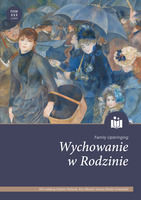Budownictwo szkół powszechnych w województwie wileńskim w latach II RP
Construction of public schools in the wileńskie voivodship in the Second Republic of Poland.
Results of preliminary research
Author(s): Ewa Jurczyk-Romanowska, Mirosław Piwowarczyk , Stefania WalasekSubject(s): Social Sciences
Published by: Zakład Historii Edukacji w Instytucie Pedagogiki Uniwersytetu Wrocławskiego
Keywords: budownictwo szkolne; II RP; odbudowa państwa polskiego; kresy wschodnie; szkoły powszechne; finansowanie budowy szkół
Summary/Abstract: Introduction. Between 1918 and 1939, the issue of building schools, above all universal schools, became a priority task for the state, local authorities and local communities. The introduction of statutory compulsory education resulted in the need to build schools in numerous localities, overcoming a number of problems primarily of a financial nature. The aim of this article is to present the process of building schools, their increasing size and sources of funding. Aim. This article presents the development of the construction of public schools in the Wilno [Vilnius] province during the years of the Second Republic. The research included an analysis of various documents concerning legislative solutions at the state level, local activities, as well as support of local activities by national organisations and societies. Method. The research was conducted using the method of qualitative document analysis. The diverse source material was collected both during an archival search in Vilnius and a search of commonly applicable legal acts made through the Internet System of Legal Acts. Results. The article indicates the number of schools built in the Vilnius district during the years of the Second Republic and attempts to reconstruct their financing. Conclusion. The effect of the construction (expansion and renovation) of schools in the Second Republic was: 1) the development of the educational network neglected during the Partitions and destroyed during the actions of World War I and in the years 1918-1920; 2) to create conditions for the increasingly full implementation of compulsory schooling; 3) organising a centre for the cultural and educational life of the local community; 4) activating and integrating the inhabitants of the locality.
Journal: Wychowanie w Rodzinie
- Issue Year: XXX/2023
- Issue No: 2
- Page Range: 25-40
- Page Count: 16
- Language: Polish

